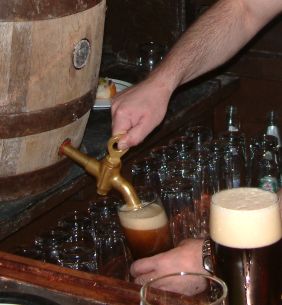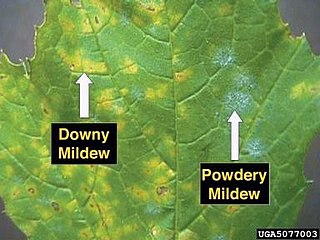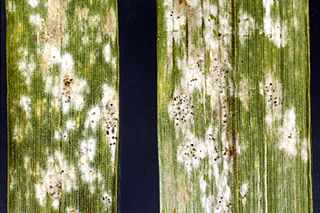Adnams is a regional brewery founded in 1872 in Southwold, Suffolk, England, by George and Ernest Adnams. It produces cask ale and bottled beers. Annual production is around 85,000 barrels.

Wheat beer is a top-fermented beer which is brewed with a large proportion of wheat relative to the amount of malted barley. The two main varieties are German Weizenbier and Belgian witbier; other types include Lambic, Berliner Weisse, and Gose.
The Reinheitsgebot is a series of regulations limiting the ingredients in beer in Germany and the states of the former Holy Roman Empire. The best known version of the law was adopted in Bavaria in 1516, but similar regulations predate the Bavarian order, and modern regulations also significantly differ from the 1516 Bavarian version. Although today the Reinheitsgebot is mentioned in various texts about the history of beer, historically it was only applied in the duchy, electorate, then Kingdom of Bavaria and from 1906 in Germany as a whole, and it had little or no effect in other countries or regions.

Smoked beer is a type of beer with a distinctive smoke flavour imparted by using malted barley dried over an open flame.

Powdery mildew is a fungal disease that affects a wide range of plants. Powdery mildew diseases are caused by many different species of ascomycete fungi in the order Erysiphales. Powdery mildew is one of the easier plant diseases to identify, as the signs of the causal pathogen are quite distinctive. Infected plants display white powdery spots on the leaves and stems. This mycelial layer may quickly spread to cover all of the leaves. The lower leaves are the most affected, but the mildew can appear on any above-ground part of the plant. As the disease progresses, the spots get larger and denser as large numbers of asexual spores are formed, and the mildew may spread up and down the length of the plant.

Sapporo Breweries Ltd. is a Japanese beer brewing company founded in 1876. Sapporo is the oldest brand of beer in Japan. It was first brewed in Sapporo, Hokkaido, Japan, in 1876 by brewer Seibei Nakagawa. The world headquarters of Sapporo Breweries is in Ebisu, Shibuya, Tokyo. The company purchased the Canadian company Sleeman Breweries in 2006.

Spoetzl Brewery is a brewery located in Shiner, Texas, United States. It produces a diverse line of Shiner beers, including their flagship Shiner Bock, a dark lager that is now distributed throughout the US. The brewery is owned by the Gambrinus Company, a family-owned company based in San Antonio, which also owns Trumer Brewery in Berkeley, California.

Beer in Norway has a long history, stretching back more than a millennium. Until some 200 years ago, most farms where it was possible to grow grain south of the Arctic Circle, brewed their own beer. From the early 20th century brewing was industrialized and home brewing was restricted. Significant consolidation in the brewing sector reduced the number of major breweries to just a handful. With the exception of the farmhouse ales, most beer styles brewed in Norway trace their ancestry to central Europe.
Beer in Africa, especially lager, is produced commercially in most African countries, and indigenous people also make varieties of beer. Beer is served in various locales, from neighbourhood shebeens to upscale bars. Many countries have standardized beer bottle sizes, which are cleaned and re-used, so when buying beer at a store, people often must pay a deposit on the bottle and the price of the beer. An alternative to glass-bottle beers is local beer sold in tetra-pak style paper cartons.
The cereal grain wheat is subject to numerous wheat diseases, including bacterial, viral and fungal diseases, as well as parasitic infestations.

Maris Otter is a two-row, autumn sown variety of barley commonly used in the production of malt for the brewing industry. The variety was bred by Dr G D H Bell and his team of plant breeders at the UK's Plant Breeding Institute; the "Maris" part of the name comes from Maris Lane near the institute's home in Trumpington. It was introduced in 1966 and quickly became a dominant variety in the 1970s due to its low nitrogen and superior malting characteristics. By the late-1980s the variety had become unpopular with large breweries and it was removed from the UK National List in 1989.

Blumeria graminis is a fungus that causes powdery mildew on grasses, including cereals. It is the only species in the genus Blumeria. It has also been called Erysiphe graminis and Oidium monilioides or Oidium tritici.

Korn, also known as Kornbrand or Kornbranntwein, is a German colorless distilled beverage produced from fermented cereal grain seed. The production of Korn uses only five grains: most of the production is based on rye or wheat; barley is mainly used to obtain the required malt for the brewing process; oats and buckwheat are rarely used. The addition of food colorings, flavorings, or sweeteners is not permitted. Korn is distilled to lower alcoholic proofs and less rigorously filtered than vodka, which leaves more of the cereal grain flavor in the finished spirit.

The European Brewery Convention (EBC) is an organisation representing the technical and scientific interests of the brewing sector in Europe. The EBC defines itself as the scientific and technological arm of The Brewers of Europe. Among brewers, EBC is perhaps best known for the EBC units measuring beer and wort colour, as well as EBC units for quantifying turbidity in beer. Equally, the EBC congress is recognised globally as a significant meeting event for the world's brewing, malting and beer fermentation scientists and technologists, taking place every two years.
A doubled haploid (DH) is a genotype formed when haploid cells undergo chromosome doubling. Artificial production of doubled haploids is important in plant breeding.

Barley, a member of the grass family, is a major cereal grain grown in temperate climates globally. It was one of the first cultivated grains; it was domesticated in the Fertile Crescent around 9000 BC, giving it nonshattering spikelets and making it much easier to harvest. Its use then spread throughout Eurasia by 2000 BC. Barley prefers relatively low temperatures and well-drained soil to grow. It is relatively tolerant of drought and soil salinity but is less winter-hardy than wheat or rye.

Plant disease resistance protects plants from pathogens in two ways: by pre-formed structures and chemicals, and by infection-induced responses of the immune system. Relative to a susceptible plant, disease resistance is the reduction of pathogen growth on or in the plant, while the term disease tolerance describes plants that exhibit little disease damage despite substantial pathogen levels. Disease outcome is determined by the three-way interaction of the pathogen, the plant, and the environmental conditions.
Golden Promise is a variety of spring-sown two-row barley. It was developed in the 1950s by exposing an existing variety to gamma radiation with the aim of producing a semi-dwarf variety of barley that had good malting characteristics. It became very popular with farmers during the 1970s but began to be replaced by higher yielding varieties in the 1980s. Due to its perceived better flavour than these more modern varieties, a niche market was maintained and it is still favoured by craft brewers. It has been used by researchers to study the genetics of barley and to investigate the effect of barley on the flavour of beer.












